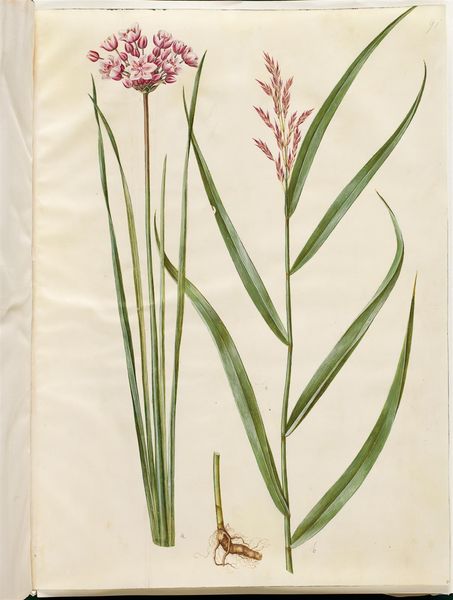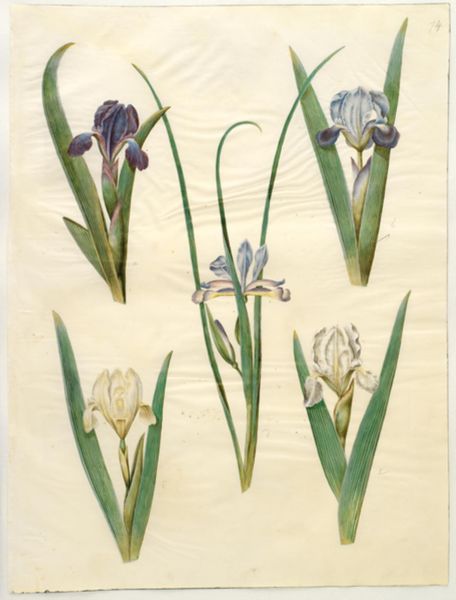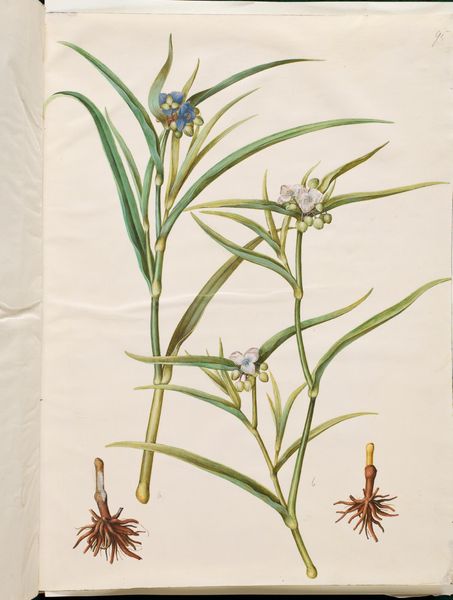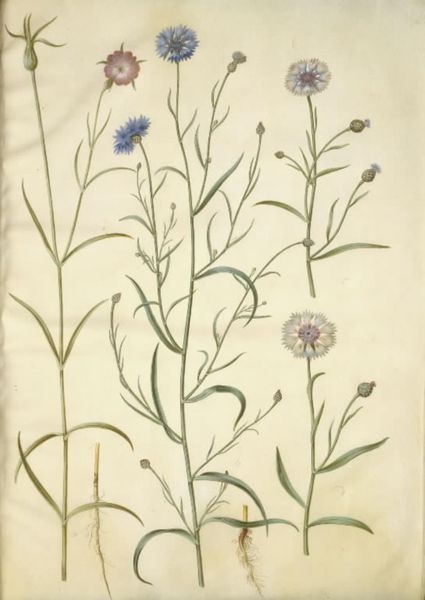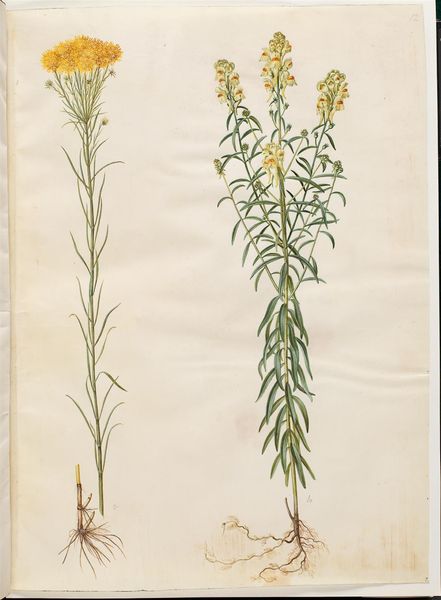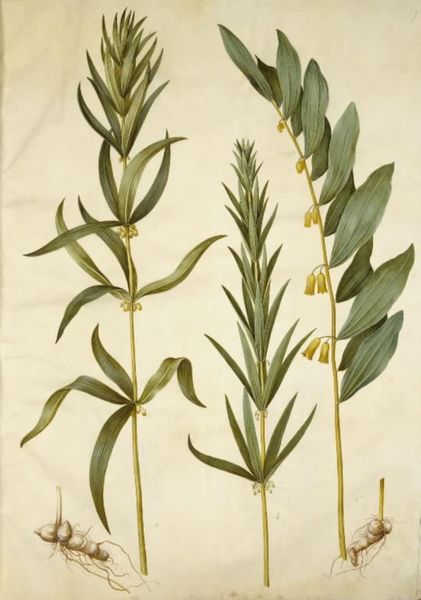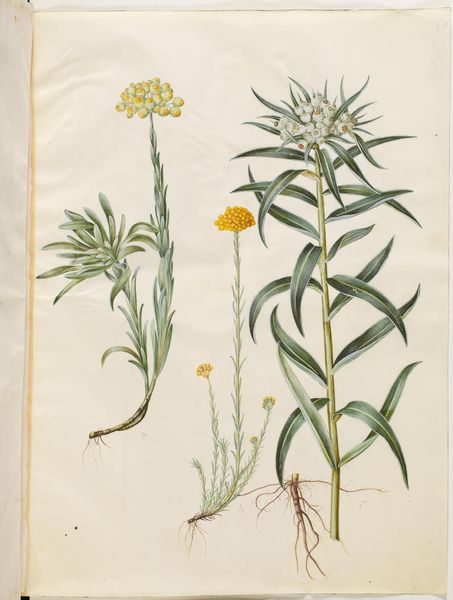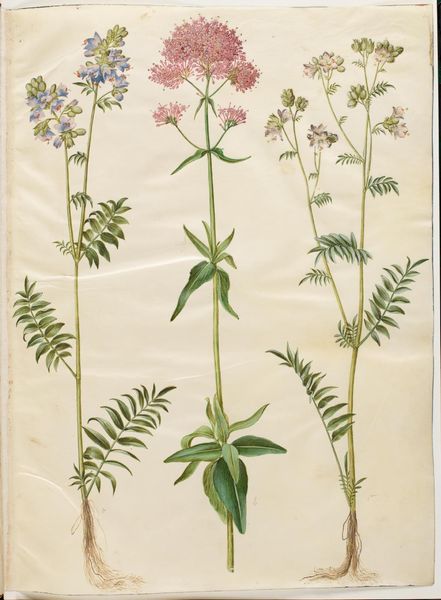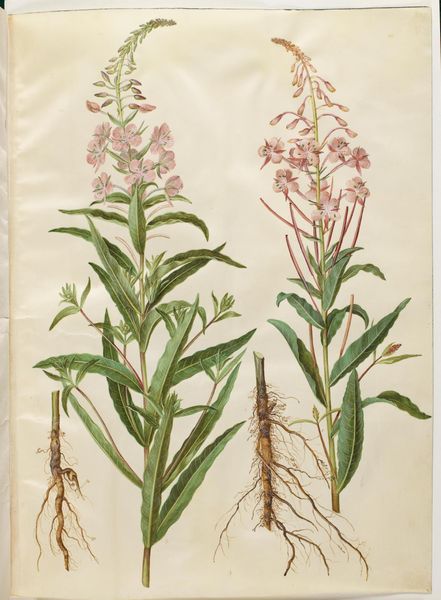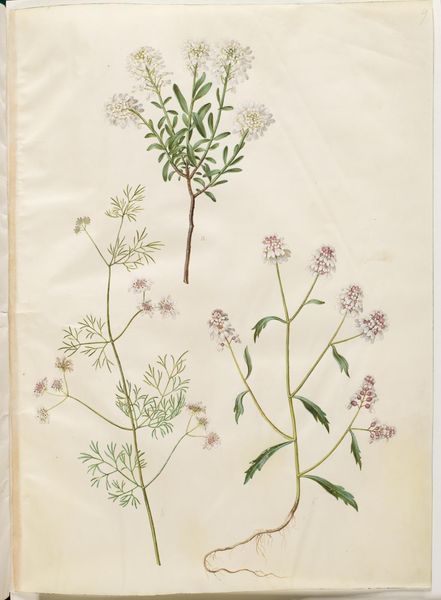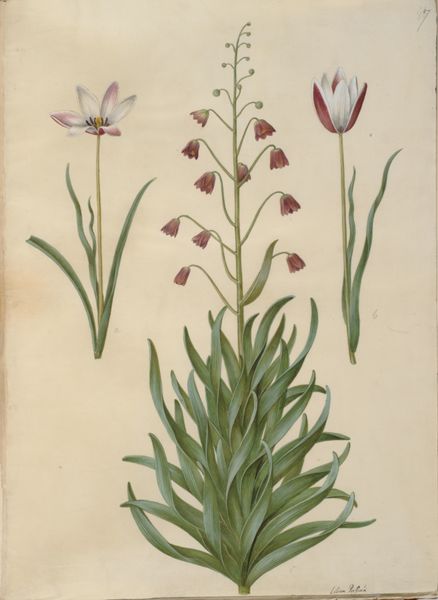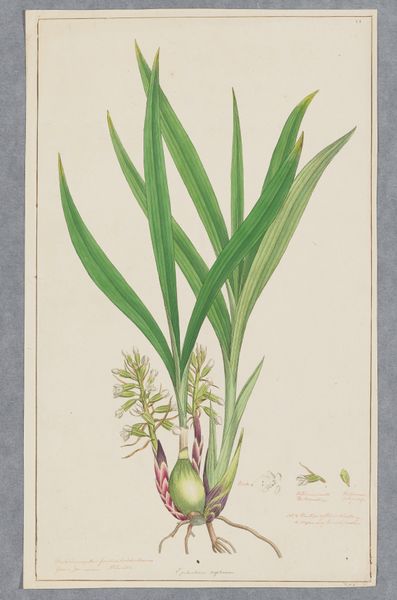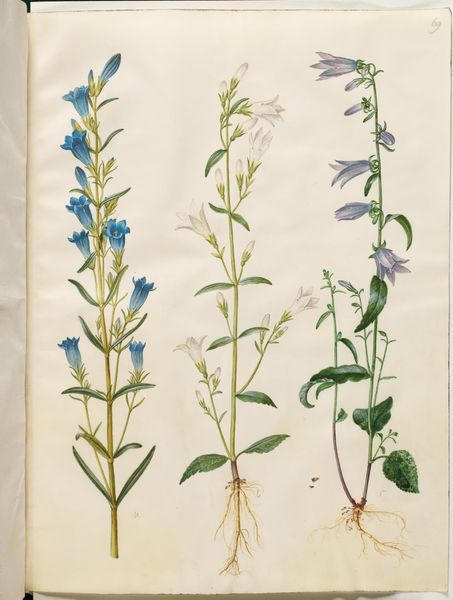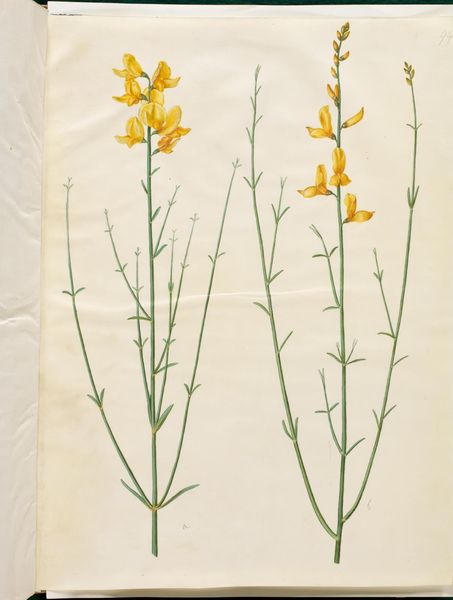
Bromus hordeaceus (blød hejre); Phalaris arundinacea (stribegræs) 1649 - 1659
0:00
0:00
drawing, gouache, watercolor
#
drawing
#
gouache
#
watercolor
#
watercolour illustration
#
botanical art
#
watercolor
#
realism
Dimensions: 505 mm (height) x 385 mm (width) (bladmaal)
Curator: Up next is a meticulously rendered botanical study. The artwork, titled "Bromus hordeaceus; Phalaris arundinacea" by Hans Simon Holtzbecker, dating from 1649 to 1659, showcases two types of grasses with stunning realism. It was executed using watercolor and gouache. Editor: My first impression is one of serene observation. The details of the grasses against that stark background—it’s so delicate and calming. There’s almost a meditative quality to it. Curator: Indeed. Botanical illustration during this period was significant. It wasn't simply aesthetic, but functional. These types of drawings served as important scientific records before the advent of modern photography, primarily to inform medicinal practices, culinary practices, agriculture, or simply a comprehensive cataloging of nature. The plants documented are Bromus hordeaceus, or soft brome, and Phalaris arundinacea, reed canary grass. Editor: I notice the subtle variation in the rendering of each plant. The textures and details capture something beyond pure representation. The roots exposed as well – what might that signify? Grass is symbolic too. Its association with meadows suggests plenty and providence, a sense of gentle, unfurling growth in pastoral paradise. I wonder if it references ideas of abundance, especially after decades of strife with wars, plagues, and famine. Curator: A fascinating interpretation! Considering the historical context, your read is indeed plausible. In an age defined by rapid scientific advancement coinciding with tumultuous socio-political shifts, the symbolism could be manifold: the delicate balance of nature amidst war or possibly a desire to assert human dominion over it through this careful classification and rendering. Editor: Right! And with botanical studies often commissioned or created for aristocratic circles, this could also be about the commissioner's refined taste and their ambition of establishing dominance over the surrounding natural world via acquisition and art. Curator: An excellent point about its reception and display, certainly something to keep in mind as we examine similar works! Editor: It is striking to consider how visual representation plays a central role in ordering, understanding, and ultimately shaping the environment. Thanks to you, my perspective of it as an archival document adds depth. Curator: And thank you for offering its rich symbolic texture; it enriches our understanding greatly! Let's move along to our next piece.
Comments
No comments
Be the first to comment and join the conversation on the ultimate creative platform.
